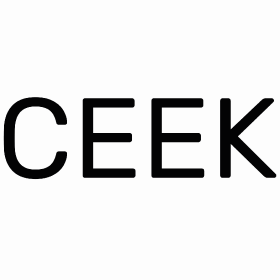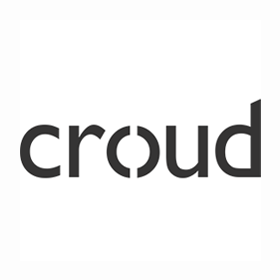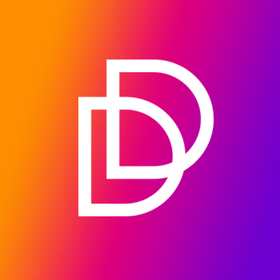We connect you with the best and most reliable agency partners for your projects. All DAN members are thoroughly vetted and ready to deliver exceptional results.

Featured Agencies
Prominent Social Media Marketing Companies of London
-
Together
Together is a full-service agency that build brands, websites and digital products for good tech companies all over.Services- Branding
- Creative
- Digital Product Design
- Digital Strategy
- Mobile App Development
- UX Design
- Web Design
- Web Development
Industries- Education
- Finance
- IT & Technology
- Startup
-
Creative Brand Design
An award-winning London Digital Agency, specialising in Digital Marketing Services, SEO Optimised Website Design and Bespoke Web Development.Services- Web Design
- Web Development
- UX Design
- SEO
- eCommerce
- Branding
- Creative
- Digital Strategy
Industries- Travel & Tourism
- Finance
- Automotive
- Hospitality
- Energy
- IT & Technology
- Telecommunications
- Gaming
Select a service type to discover the best digital marketing agencies!
DAN Member Agencies
Providing Social Media Marketing Services in London
All social media marketing agencies in London have been vetted and verified against the following criteria:
- Portfolio Quality
- Reliable Services
- Sectoral Expertise
- Team Transparency
If you have any feedback regarding the agencies, please contact us.
Best Digital Marketing Agencies by Services in London
Discover the top-notch digital marketing agencies in London by browsing through wide range of services
- AI Marketing Agencies in London
- B2B Marketing Agencies in London
- Branding Agencies in London
- Content Marketing Agencies in London
- Creative Agencies in London
- Digital Marketing Agencies in London
- Digital PR Agencies in London
- Digital Product Design Agencies in London
- Digital Strategy Agencies in London
- eCommerce Agencies in London
- Email Marketing Agencies in London
- Inbound Marketing Agencies in London
- Influencer Marketing Agencies in London
- Mobile App Development Agencies in London
- Online Advertising Agencies in London
- PPC Agencies in London
- SEO Agencies in London
- Software Development Agencies in London
- UX Design Agencies in London
- Video Production Agencies in London
- Web Design Agencies in London
- Web Development Agencies in London
How to Choose a Social Media Agency in London
While there are hundreds of social media agencies in London, selecting the right one is critical in order to achieve the best results for your company.
Each industry has its own unique dynamics, and target audiences can differ significantly in personality and behavior. Always inquire about the social media agency’s expertise in the industry your business is in. By doing this, you can be certain that they are aware of the specifics of your industry and how to handle your social media marketing efforts.
You can review the sectors in which our member agencies in London are specialized, from the profile pages above.
Moreover, there are a few critical questions you should ask the social media agency you want to work with in London.
What results have you achieved for your clients?
Ask the agency about their customers’ social media engagement, growth, lead generation, conversions, and return on investment (ROI) results. This will give you a better idea of their capacity to use proven social media marketing methods to generate profitable outcomes for similar brands in London.
It would be beneficial to review the outcomes of paid social media advertising and creative social media campaigns implemented by agencies for other customers in your industry, specifically on social media networks such as Instagram, Facebook, and Linkedin.
What are your pricing structure and payment terms?
It is critical to understand the agency’s pricing structure to ensure that it fits within your budget. Inquire about the agency’s pricing for various social media marketing services, as well as whether they offer any customizable solutions or packages to meet your specific requirements. It is also beneficial to understand the agency’s payment terms.
Social Media Marketing Agency Vetting Checklist
- Pricing Structure
- Industry Experience
- Team
- Service Quality
- Campaign Examples
- Reporting and Communication
- Flexibility and Scalability
- Tools and Technology
- Contractual Terms and Conditions
- Cultural Fit
- Content Creation
- Audience Engagement
- ROI and Analytics
Does the social media agency in London follow a fixed pricing model, or do they tailor it to meet individual requirements?
While some social media marketing agencies offer fixed pricing structures, others prefer to tailor the price according to your needs. When you're on the hunt for the right social media marketing agency for your business, it's crucial to address this question right from the start. If you have a particular pricing model in mind and don't take the time to evaluate how different potential social media marketing agencies in London handle pricing, you might end up investing time in numerous project meetings without first confirming that you and the agency are aligned in terms of the pricing structure.
Are there potential additional costs or fees?
Hidden expenses can have a significant impact on your budget. Therefore, you should address this question beforehand. This way, you can safeguard your finances against unforeseen surprises and ensure that your decision to work with the social media agency in London aligns with your financial objectives. This consideration plays a key role in evaluating both the affordability and trustworthiness of social media marketing companies.
How is the payment plan typically structured?
It's important to have a good grasp of the payment plan provided by a social media marketing agency for effective budget management. This plan outlines when and how you'll receive bills for their services. Having a transparent payment plan ensures that there's a mutual understanding between you and the agency regarding financial obligations, promoting peace of mind and preventing any future disagreements. This step is a fundamental part of building a productive and harmonious working relationship with social media management services.
Does the social media agency have documented experience in specific industries?
Choosing a social media marketing agency in London with a proven track record in your field ensures they have a deep understanding of the different challenges, trends and audiences important to your business. This increases your chances of receiving effective and customized social media marketing services that connect to your intended audience.
Are there examples or case studies from past social media campaigns managed by the social media agency in London
Many agencies offer prospective clients social media marketing portfolios and case studies. When picking a social media marketing agency in London, it's beneficial to start by looking through these portfolios. It enables you to comprehend their approach, examine success stories, and view verifiable proof of their expertise. These resources offer insightful information about the agency's creativity and the effectiveness of their work. This will allow you to evaluate their proficiency in developing and implementing marketing strategies as well as providing effective social media marketing services.
What challenges have the agency encountered related to social media specific industries?
Each agency specializes in different sectors. Thus, the challenges they face can vary. As you search for the right agency, it's beneficial to inquire about the specific challenges they've encountered in your sector prior to collaboration. This will help you comprehend the adaptability and problem-solving abilities of the potential social media marketing agency in London when going through the complexity of various industries.
Who typically takes the lead or main role during campaigns?
In a social media marketing agency, the leadership role can vary depending on the agency's structure and the specific campaign's requirements. Since they establish the strategy and make sure it is in line with the client's goals, the social media strategist or account manager takes the lead in organizing and managing the campaign. Yet, the contribution of each team member to the project is important. This team usually includes a combination of social media strategists, content creators, graphic designers, data analysts, and community managers. It's a collaborative effort where each member brings their expertise to ensure the success of the social media marketing campaigns for clients.
What is known about the expertise of the social media company team members?
In a social media marketing agency, the team consists of experts with different skills. Social media strategists lead the planning. Community managers, graphic designers, data analysts, and content producers all contribute to the planning process. To carry out successful campaigns, you need a diversified workforce with expertise in data analysis, community engagement, and content development. You should choose an agency with specialists in your industry if you have specific sector-related needs.
Are any parts of the campaigns typically outsourced by the social media marketing agency in London?
Some parts of the campaign may be outsourced; however, it depends on the social media marketing agency’s abilities and your needs for the campaign. Therefore, the agency should be transparent about their internal capabilities from the beginning. This way, you can assess potential risks associated with subcontracting and the agency’s overall control over the quality of their social media marketing services.
What mechanisms are in place to ensure quality in social media campaigns?
You can ask the agency about their quality control procedures, such as how they create and review content, track performance, and make data-driven decisions. A trustworthy social media marketing agency will have a comprehensive strategy that shows its dedication to providing social media marketing services that are effective. Understanding these mechanisms will help you make an informed decision and set the foundation for a successful collaboration in your social media marketing campaign.
How are campaign revisions and feedback typically handled by the social media agency?
Campaign revisions and feedback in social media marketing agencies involve a structured process. The agency submits draft campaigns for client review, collects feedback, and then revises the campaign accordingly. This revised draft is presented for a second review and client approval. To make sure the campaign is ready for launch and in line with the client's goals, effective communication is necessary.
Are there testimonials or references available from past campaigns?
Agencies understand the value of positive feedback, which is why many social media marketing agencies feature client testimonials on their websites. If you can't find appropriate references for the agency you plan to work with, it's a reasonable step to request them directly from the agency.
Are there detailed examples of past social media campaigns?
Detailed campaign examples offer a deeper understanding of the agency's creative and strategic capabilities. Thus, the social media marketing agency should be able to provide detailed examples of their past campaigns. You can evaluate the agency's approach to crafting and executing social media marketing campaigns by examining these examples.
How have past campaigns managed by the social media agency impacted client metrics or branding?
Evaluating the impact of past campaigns on client metrics and branding provides concrete evidence of the agency's ability to drive results. It demonstrates their capacity to deliver social media advertising services that positively influence key performance indicators (KPIs) and enhance brand visibility. Understanding the measurable impact of past campaigns is central to selecting a social media marketing agency in London that can help you achieve your objectives.
Are there campaign examples relevant to specific industries or goals?
You should look through the portfolio and case studies of the potential social media marketing agency to see if they have any examples of campaigns that precisely match the objectives of your business and your industry niches. You can determine whether the agency is the right match for your company after giving it an in-depth look, and they can assess the possibility of reaching the objectives that you have set for your social media marketing campaign.
How frequently are campaign reports and updates provided?
You can ask for consistent updates from your partner agency. These reports offer insights into the progress of your campaigns. It allows you to mesure the impact of the agency’s social media marketing services. A transparent reporting schedule underscores the agency’s commitment to accountability and delivering value in social media management services.
What tools or platforms are used by the social media agency in London for campaign management and communication?
You can enhance teamwork by discovering the tools and platforms that the social media marketing agency utilizes for managing branding projects and communication. Selecting complementary systems improves your social media journey and simplifies your campaign procedures, guaranteeing smooth feedback and milestone monitoring.
How are challenges or changes in campaigns communicated?
Clients and agencies can swiftly address concerns, adjust strategy when needed, and sustain campaign momentum when there is clear and responsive communication. An agency's communication standards show how committed they are to transparency and adaptability when offering social media marketing services.
How adaptable are the campaigns to sudden changes or new requirements?
The digital landscape has a dynamic nature. Thus, the ability of social media marketing campaigns to adapt to sudden changes or new requirements is crucial. You should define the agency’s agility and flexibility beforehand. This illustrates their ability to quickly adjust their strategy, seize new possibilities, and effectively adapt to changing client needs. For customers looking for social media marketing companies that can handle uncertainty, this flexibility is essential.
Can campaigns scale up by the smm agency if there's a need for a broader reach?
Think of scalability as having a magic potion for your social media success. It's a big deal for clients with dreams of growth or super-sized campaign needs. A top-notch agency's power to scale up means they can handle bigger goals – whether it's reaching more eyeballs or spicing up your social media game. And here's the kicker: knowing they can handle the growth without sacrificing quality is like getting a warm hug for your peace of mind.
How are tasks and priorities managed during intense campaign periods?
Steering through intense campaign periods requires impeccable tasks and priority management. It's the linchpin for maintaining productivity and achieving optimal results. Examining an agency's workload management strategy will help you determine how well-equipped they are to handle instances where demand is high. This inquiry illuminates the strategic measures they use to ensure efficiency in campaign operations, meet deadlines, and achieve overarching goals.
What are the primary tools and platforms used for creating and managing campaigns?
The primary tools and platforms used for social media marketing campaigns vary based on the goals and target audience. Commonly employed tools include social media management platforms like Hootsuite or Buffer for scheduling and monitoring. The main analytics tool used is Google Analytics. For content creation, however, design software such as Adobe Creative Cloud or Canva is utilized. Additionally, advertising platforms like Facebook Ads Manager or Google Ads play a crucial role in targeted campaign promotion. The choice of tools depends on the specific needs and strategies of the social media marketing campaign.
Is there experience with a variety of social media platforms?
You should inquire about the agency's experience with different social media platforms when vetting social media marketing agencies. An adaptable agency should be able to show its skills in navigating social platforms like Facebook, Instagram, Twitter, LinkedIn, and more. This guarantees that the agency is skilled at creating approaches that adapt to each platform's strengths in addition to being familiar with them. For a thorough and successful social media strategy, it's important to choose a partner who is skilled in various platforms rather than one.
How are the latest social media trends and technologies incorporated?
Social media marketing agencies should demonstrate a proactive approach to staying in the loop, whether it's embracing new features on platforms like Instagram or TikTok, exploring augmented reality for engaging content or leveraging emerging technologies for data-driven insights. With social media marketing services always changing, this approach ensures that clients remain innovative and competitive.
What are the terms if adjustments or termination of a campaign are required?
As the client, you need to clarify how the agency handles tweaks to the strategy or if needed, the complete halt of a campaign. Discussing these terms upfront ensures transparency and a clear understanding of the flexibility or limitations in making changes as your goals evolve.
How are data security and user privacy typically handled by the social media agency?
Strong security protocols and encrypted data transmission are just two examples of the safeguards that a reliable agency should have in place. A transparent discussion about their data protection policies ensures that your brand's integrity remains intact while building trust with your audience. This allows you to assess their dedication to conducting ethical and trustworthy social media marketing services.
Are there post-campaign reviews or maintenance sessions included?
Yes, post-campaign reviews or maintenance sessions should be included as a service of your partner social media marketing agency in London. It should not only help you shine during the campaign but also stick around for the cleanup and analysis. You should inquire about their post-campaign routines -- whether it's dissecting the results, providing insights for future strategies, or fine-tuning ongoing efforts.
What is the agency’s general work culture and ethos like?
You want a team that shares a passion for creativity, collaboration, and staying ahead of the social media curve. It's possible to determine the energy that will propel your brand's digital journey by observing the atmosphere within the agency. This observation holds true whether it's during a relaxed brainstorming session or under pressure to meet a deadline. A harmonious work culture fosters effective teamwork and client-agency partnerships.
Have there been collaborations with brands or businesses with similar cultural values?
It depends on the social media marketing agency you decide to work with. However, you can inquire about the agency's past collaborations and whether it has experience partnering with clients that resonate culturally. You can also check out the agency’s case studies to have an opinion. It's an important step that will set the stage for a more cohesive and impactful collaboration with your brand.
How are differences in brand voice or opinion usually managed?
One of the most important aspects of collaboration is the ability to manage differences in brand voice or opinion. A reliable social media marketing agency in London should be able to demonstrate the capacity to align with your brand's unique voice. You can ask about the agency's strategies for handling such differences during the assesment phase. This involves clear communication, collaborative planning sessions or a comprehensive understanding of your brand identity.
How is content for campaigns typically created and curated by the social media agency?
The content creation process has a strategic and systematic approach. Social media marketing agencies develop content by identifying your brand's target audience, researching industry trends, and aligning with your brand's messaging and objectives. The whole process may include in-house creative teams, freelancers or external content creators. Curating content often includes sourcing relevant and engaging material from various sources, such as user-generated content, industry news, or trending topics. The aim is to have a mix of diverse and interesting content that connects with your audience.
Is there an emphasis on creating platform-specific content?
Absolutely, creating platform-specific content is a key focus. A reputable social media marketing agency must be tailoring content to each platform’s unique features and audience preferences. The focus is on content optimization for maximum impact on each platform. This approach guarantees that the content is not only suitable for the format but also effectively connects with the wide range of users across various social media platforms.
Are there examples of engaging and viral content pieces from past campaigns?
In assessing a social media marketing agency, you can request examples of previous content pieces from their past campaigns. This will give you insights into the agency’s creativity, strategy effectiveness, and the ability to resonate with audiences. Past projects serve as tangible evidence of the agency’s capacity to produce content that goes beyond the ordinary.
How is audience engagement and interaction typically managed by the social media marketing agency in London?
Typically, social media marketing agencies use a variety of techniques to build meaningful connections with target audiences. This could include quickly answering questions and providing feedback in addition to constantly keeping an eye on mentions, comments, and messages. Additionally, agencies often devise engagement strategies, such as interactive content, polls, or Q&A sessions, to encourage audience participation. The goal is to create a dynamic and responsive online community around the brand. The overall management of audience engagement is a continuous process that requires attentiveness, creativity, and a genuine commitment to building and nurturing relationships with the audience.
Does the social media marketing agency have strategies in place for handling negative comments or PR?
There are several strategies to navigate such situations. Social media marketing agencies typically employ various strategies to deal with negative situations. These agencies often have established procedures for private dispute resolution, aiming to move discussions away from public platforms. Additionally, promoting positive content can be part of a strategy to counteract negativity and emphasize the brand's strengths. Regular monitoring of social media channels allows agencies to identify potential issues early on, facilitating swift and strategic responses. Every social media marketing agency in London will have a different approach to unwanted situations, though.
How are brand voice and consistency maintained across various platforms?
Brand voice and consistency across platforms are maintained through clear brand guidelines, consistent visual elements, and the use of content calendars for planning. Regular training and communication with the social media team reinforce these guidelines, ensuring a cohesive and recognizable brand presence.
How is the return on investment (ROI) for campaigns measured?
Social media marketing agencies commonly use metrics such as engagement rates, click-through rates, conversion rates, and lead generation. Additionally, they use tools like Google Analytics or social media analytics platforms to analyze data and assess the impact of campaigns on business goals. Nonetheless, measuring ROI is one of the most crucial steps when it comes to evaluating the success of social media marketing campaigns.
What analytics tools are used by the social media marketing agency to track campaign success?
To measure how well a campaign is doing, social media marketing agencies in London use different tools to track important data. For instance, Google Analytics helps understand website activity, like where visitors come from and what they do on the site. Platforms like Facebook, Instagram, Twitter, and LinkedIn also have their own analytics tools. These tools show things like how many people see posts, who those people are, and how they interact with the content. There are also management tools like Hootsuite, Buffer, and Sprout Social that bring all this data together in one place for easier analysis. This information is like a report card for the campaign, helping agencies see what's working and what needs adjustment to get the best results.
Are there examples where strategic shifts led to improved campaign performance?
Sometimes, changing up strategies can really boost how well a campaign does. For instance, tweaking who the ads are shown to, changing the type of content, or adjusting when posts go out can make a big difference. This is like fine-tuning to make sure the campaign is hitting the right notes. Good social media agencies keep a close eye on the data and make smart changes to get the best results. It's all about being flexible and making sure the campaign not only stays on track but gets even better over time.
Free Listings
of Social Media Marketing Firms in London
Articles and Case Studies on Social Media Marketing
Discover more social media marketing articles on our blog!













































































